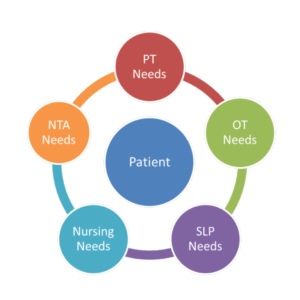Feds keep the pressure on
While President Obama has signed another Medicare “doc fix” bill, this time avoiding a scheduled 24 percent payment cut for a full year, long-term care industry professionals should be aware that the feds are keeping the pressure on in their determination to keep costs under control.
H.R. 4302, the Protecting Access to Medicare Act of 2014, which provides a 0.5 percent physician payment update through Dec. 31, also includes provisions that will affect skilled nursing facilities (SNFs). At the same time, a new report from the Medicare Payment Advisory Committee (MedPAC) includes several recommendations that, if implemented, could cause heartburn for SNFs, home health care agencies, inpatient rehabilitation facilities, long-term care hospitals (LTCHs) and hospices.
Included in H.R. 4302 was a value-based purchasing program for SNFs, which creates a hospital readmissions reduction program and encourages SNFs to address potentially avoidable readmissions through an incentive pool for high performers. According to the Congressional Budget Office, this would save Medicare $2 billion over the next 10 years.
Under that provision, the secretary of Health and Human Services (HHS) must specify a SNF all-cause, all-condition readmission measure by Oct. 1, 2015, and then an all-condition, risk-adjusted potentially preventable hospital readmission rate by Oct. 1, 2016.
Based on the readmission measure, a SNF performance standard must be established, along with levels of achievement and improvement. Then, a scoring mechanism will be set for each SNF to create a system of ranking SNFs annually. Medicare payment rates will be based, in part, on their performance scores beginning Oct. 1, 2018. SNFs ranked in the bottom 40 percent will be reimbursed less than they would be without the program.
To fund the incentive payment pool, the Centers for Medicare & Medicaid Services will withhold two percent of SNF Medicare payments starting Oct. 1, 2018. Only 50 to 70 percent of that money will be used to fund the incentive pool, however, as Medicare will keep the balance as “savings.”
Also, the program requires HHS to publicly report performance on the readmission measure for each SNF on the Nursing Home Compare website beginning on Oct. 1, 2017.
MEDPAC RECOMMENDATIONS
In its March report to Congress (PDF), MedPAC said SNFs, home healthcare agencies, inpatient rehab facilities, LTCHs and hospices all are receiving healthy margins from Medicare and so additional “updates” are unnecessary.
SNF services. According to MedPAC, SNFs’ 2012 Medicare margin was 13.8 percent, above 10 percent for the 13th consecutive year. “Key measures indicate Medicare payments to SNFs are adequate,” MedPAC said. “We also find that relatively efficient SNFs—facilities that provided relatively high quality care at relatively low costs—had high Medicare margins, suggesting that opportunities remain for other SNFs to achieve greater efficiencies.” The report said access to SNF services remains stable for most beneficiaries.
MedPAC projected the Medicare margin for freestanding SNFs in 2014 at 12 percent and reiterated its 2012 recommendation that the SNF payment system should be revised, with a four percent payment reduction imposed. Meanwhile, MedPAC said the total Medicaid margin, reflecting all payers and all lines of business, was 1.8 percent.
Home healthcare services. MedPAC said access to home healthcare services was “generally adequate” and, in 2012, there was a net gain of 257 agencies, with for-profit agencies accounting for the majority. Service volume declined slightly, as did total payments—by about two percent.
Still, MedPAC said Medicare margins for freestanding agencies averaged 14.4 percent in 2012, and the report projected average margins for this year at 12.6 percent. The commission reiterated 2011 recommendations to rebase home health payments, saying overpaying for such services negatively impacts the federal budget and raises Medicare premiums.
MedPAC also recommended a financial incentive to reduce readmissions from home healthcare, noting that about 29 percent of post-hospital home health stays result in readmission.
Inpatient rehabilitation facilities also are receiving sufficient payments, and access to care has remained stable. Quality-of-care measures show improvement in recent years, MedPAC said, projecting an 11.8 percent Medicare margin for 2014, up from 11.1 percent in 2012.
For LTCHs, a five-year federal moratorium slowed growth in the number of facilities, which stood at 420 in 2012, and the number of beneficiaries with LTCH stays also held steady. Although LTCHs only recently began submitting quality-of-care data, using claims information, MedPAC found stable or declining rates of readmission and death for almost all of the top 25 diagnoses in 2012.
Between 2011 and 2012, MedPAC noted that Medicare payments increased faster than costs, resulting in a Medicare margin of 7.1 percent. With no update, the estimated margin for 2014 would be 6.5 percent.
Hospice. Meanwhile, hospice services are on the rise, increasing nearly 4 percent in 2012 over 2011, continuing a decade-long trend of substantial market entry by for-profit providers. MedPAC said about 46.7 percent of Medicare patients who died in 2012 used hospice, up from 22.9 percent in 2000.
No quality data currently are available, but the Affordable Care Act of 2010 requires that a hospice quality-reporting program be launched this year.
MedPAC said the aggregate Medicare margin for hospices was 8.7 percent in 2011, up from 7.4 percent a year earlier, and projected at 7.8 percent for this year. Thus, the commission said hospices could continue to provide beneficiaries with appropriate access to care with no update to the base payment rate in 2015.
Bob Gatty has covered governmental developments for the trade and business press for more than 30 years. He is founder and president of G-Net Strategic Communications, Sykesville, Md.
Related article: Senate passes HR 4302; what it means to SNFs
Related article: HR 4302: AHCA, LeadingAge express mixed feelings

Robert Gatty has more than 40 years of experience in journalism, politics and business communications and is the founder and president of G-Net Strategic Communications based in Myrtle Beach, South Carolina. He can be reached at bob@gattyedits.com.
Related Articles
Topics: Articles , Executive Leadership , Medicare/Medicaid , Regulatory Compliance









